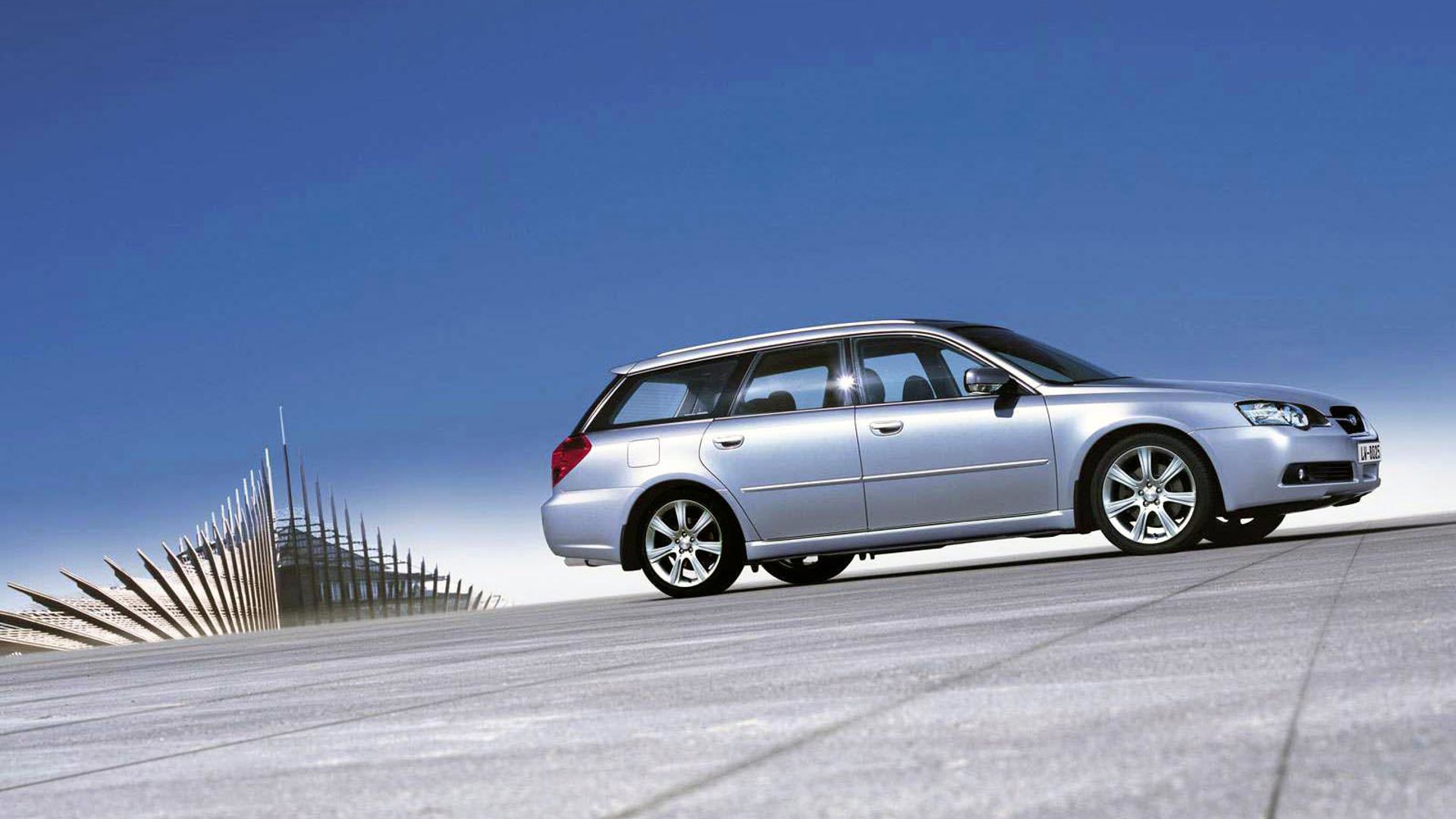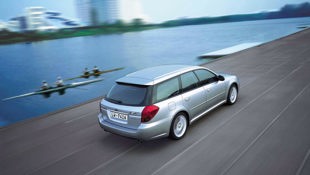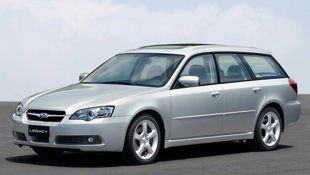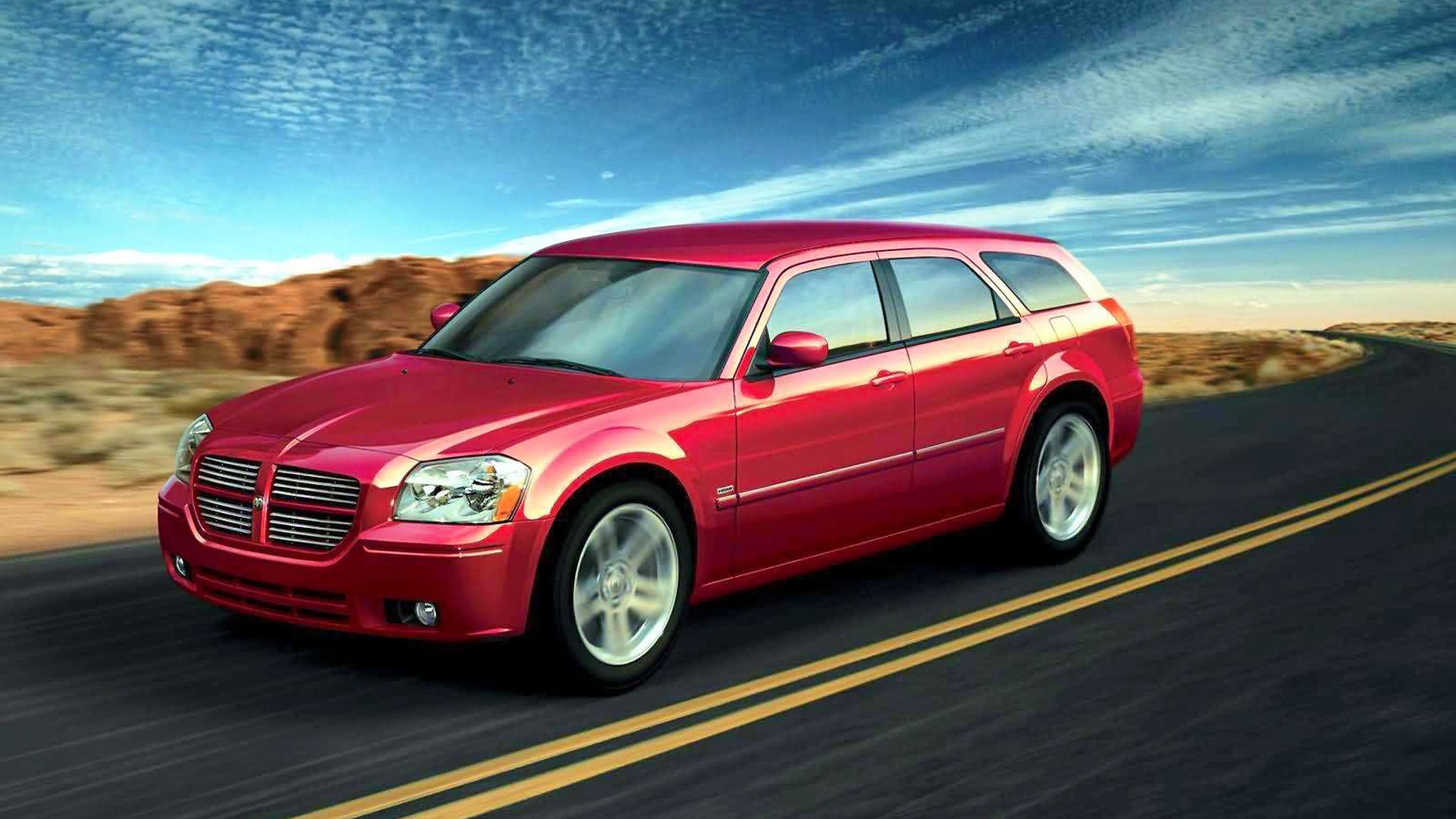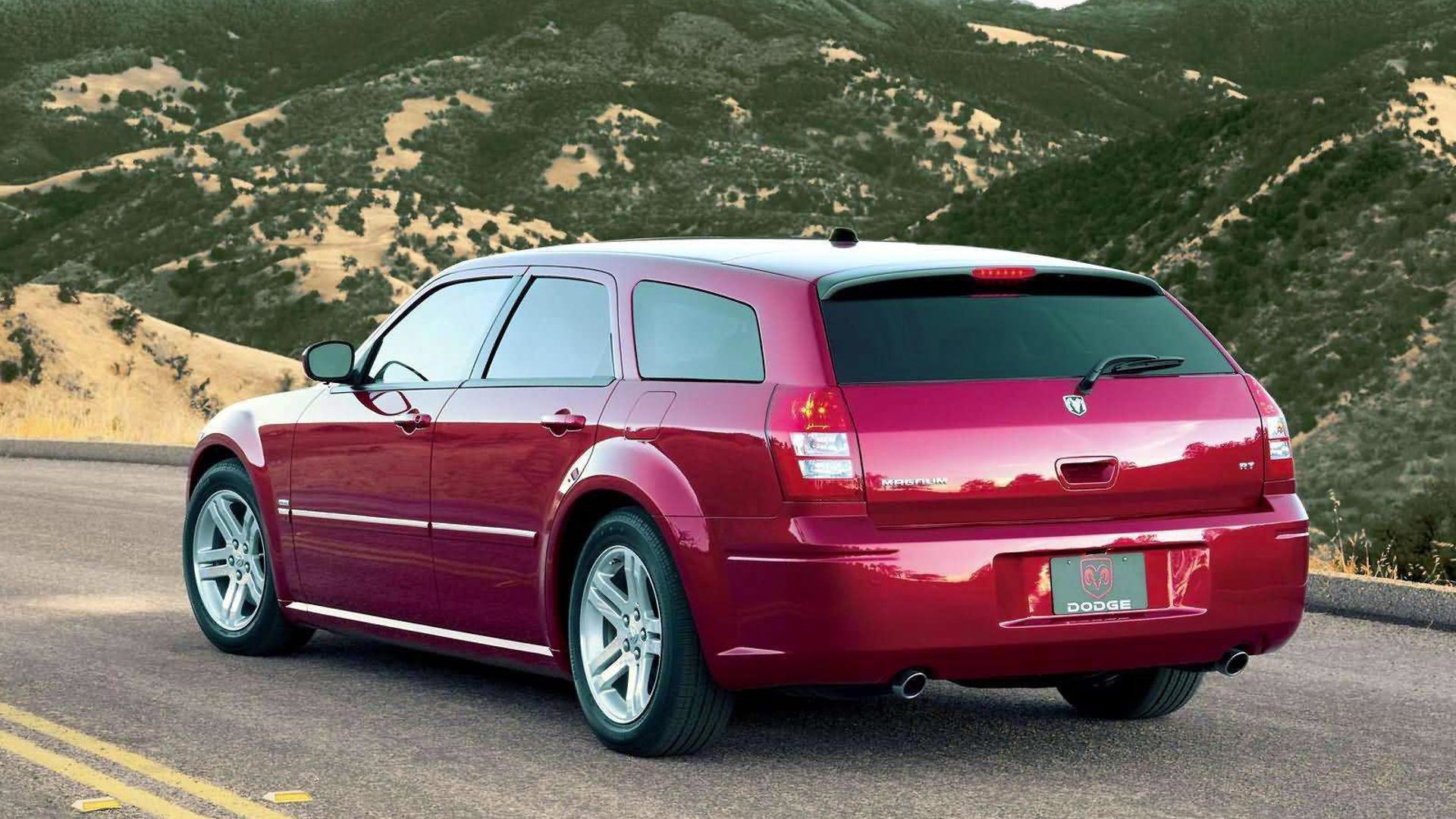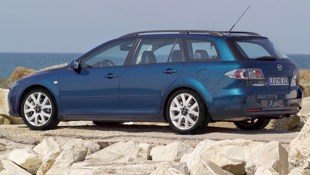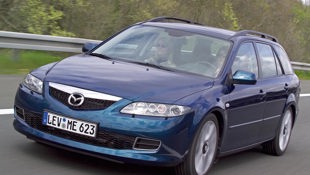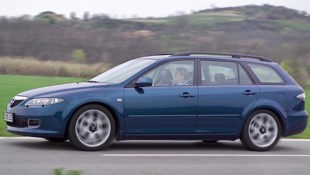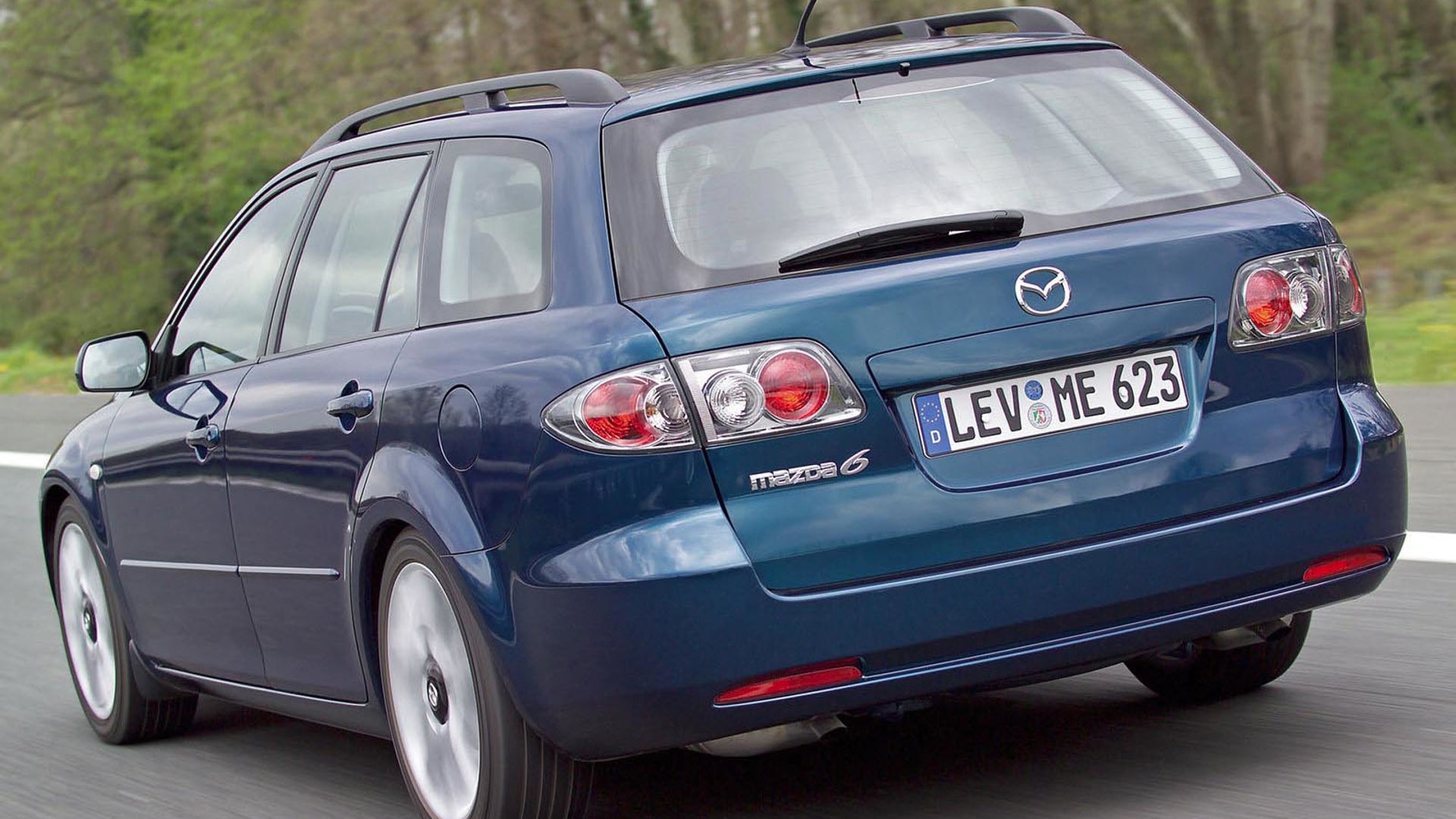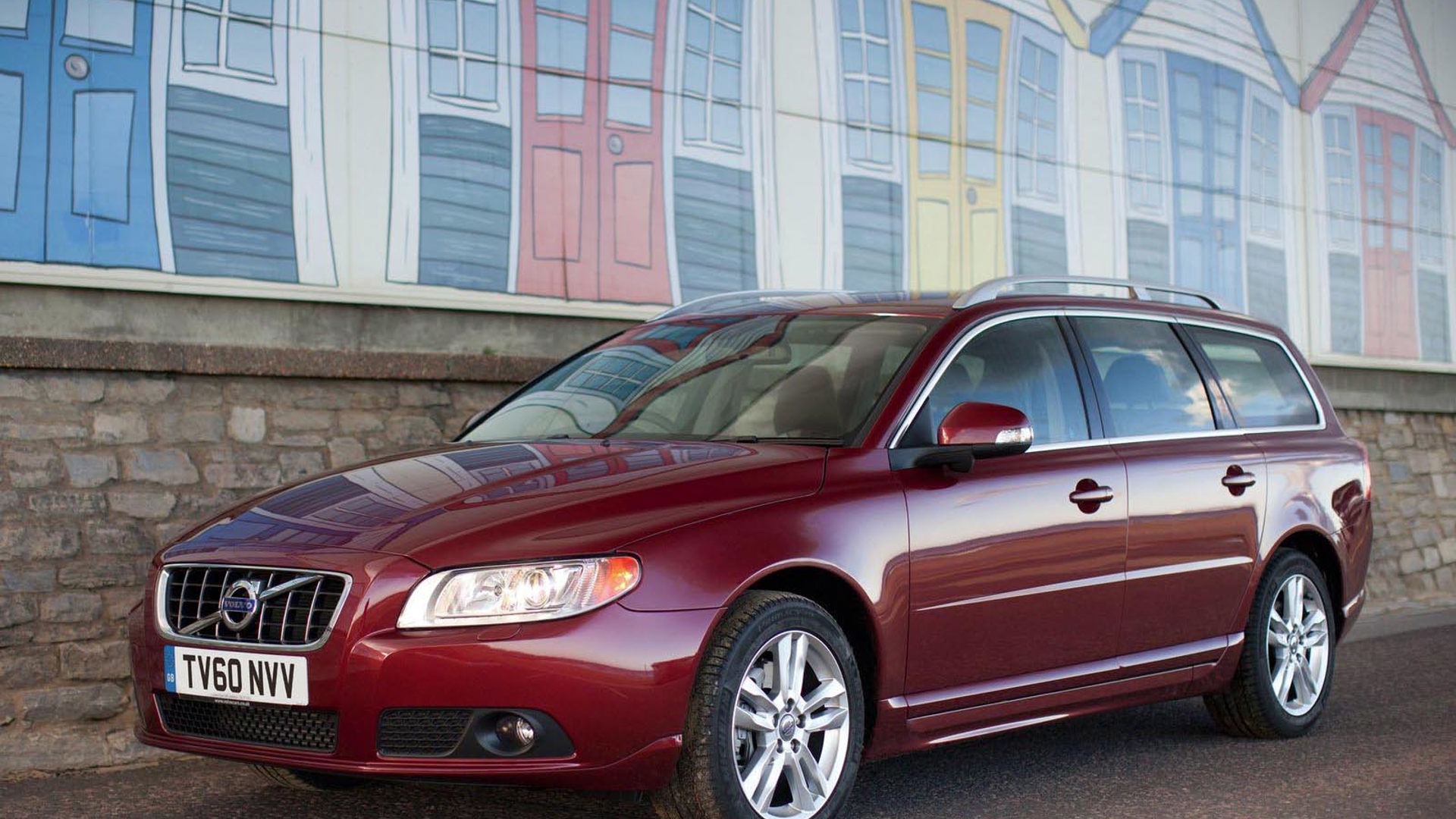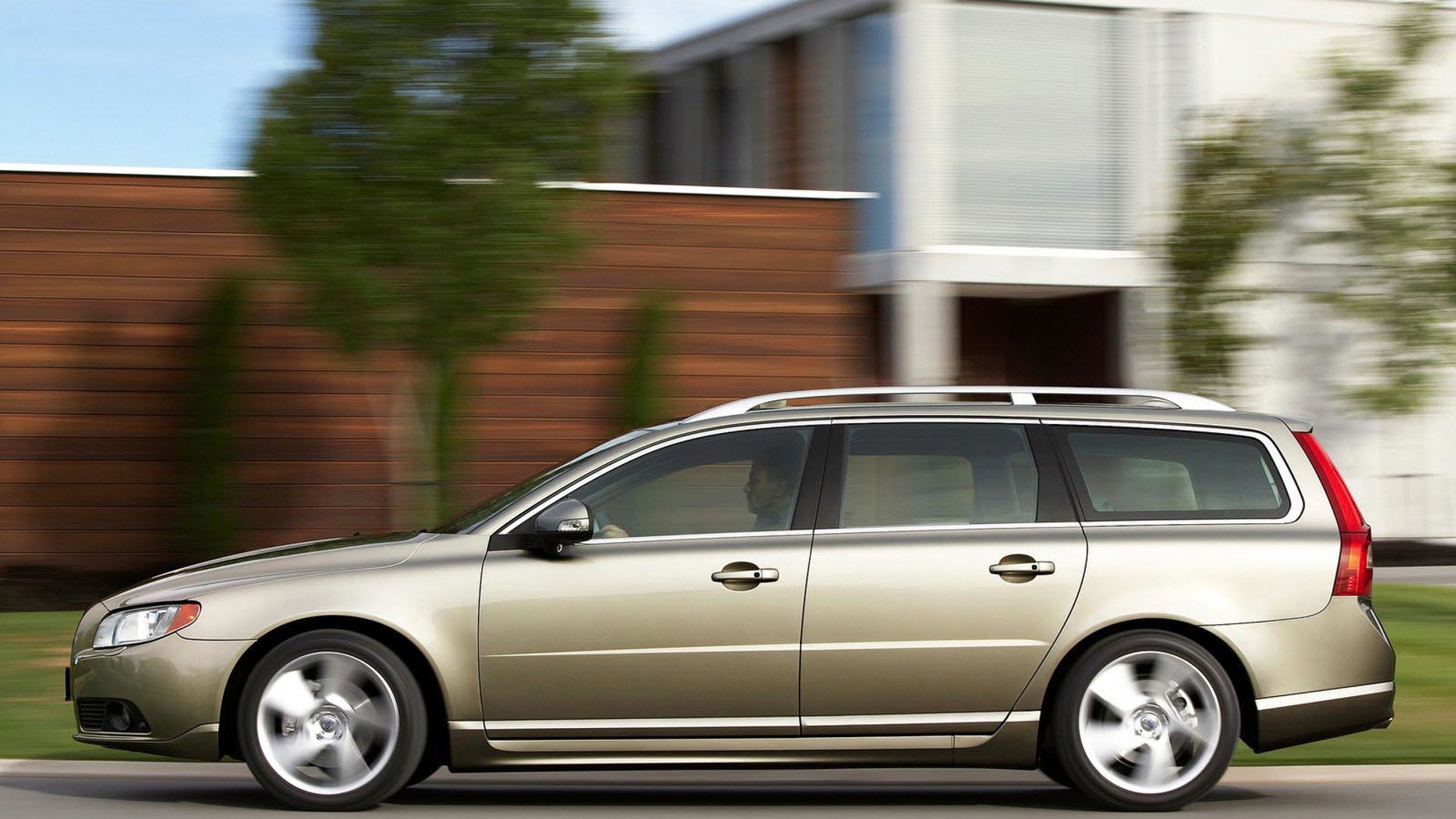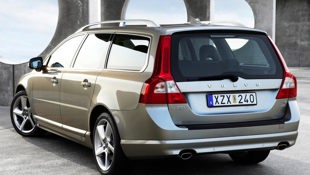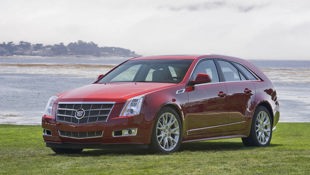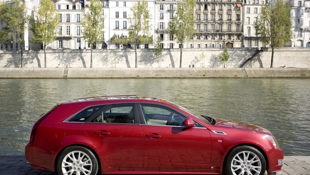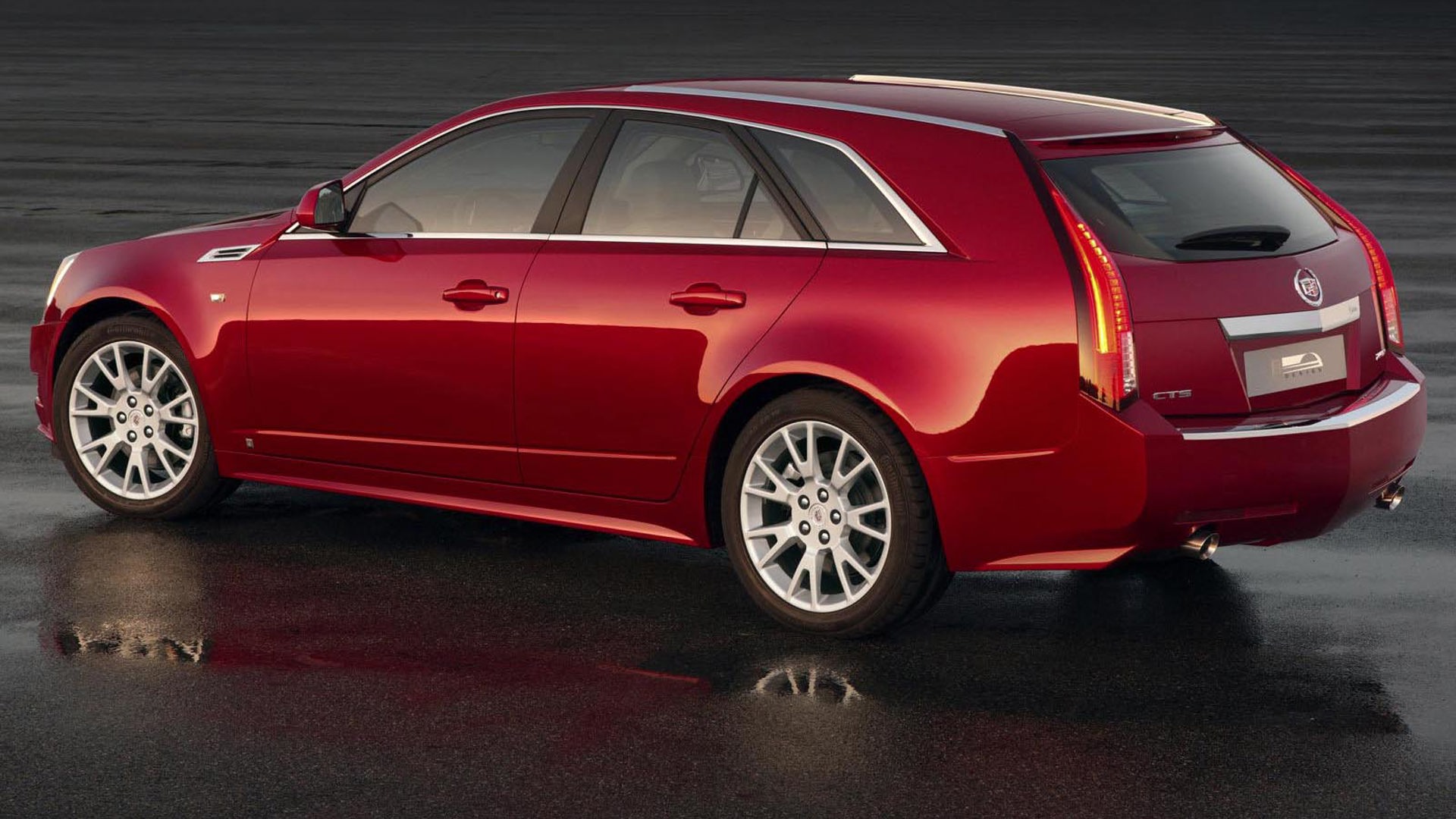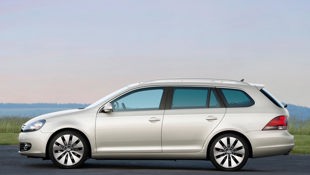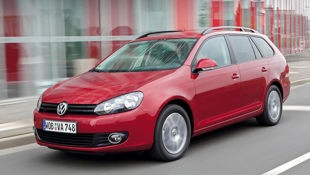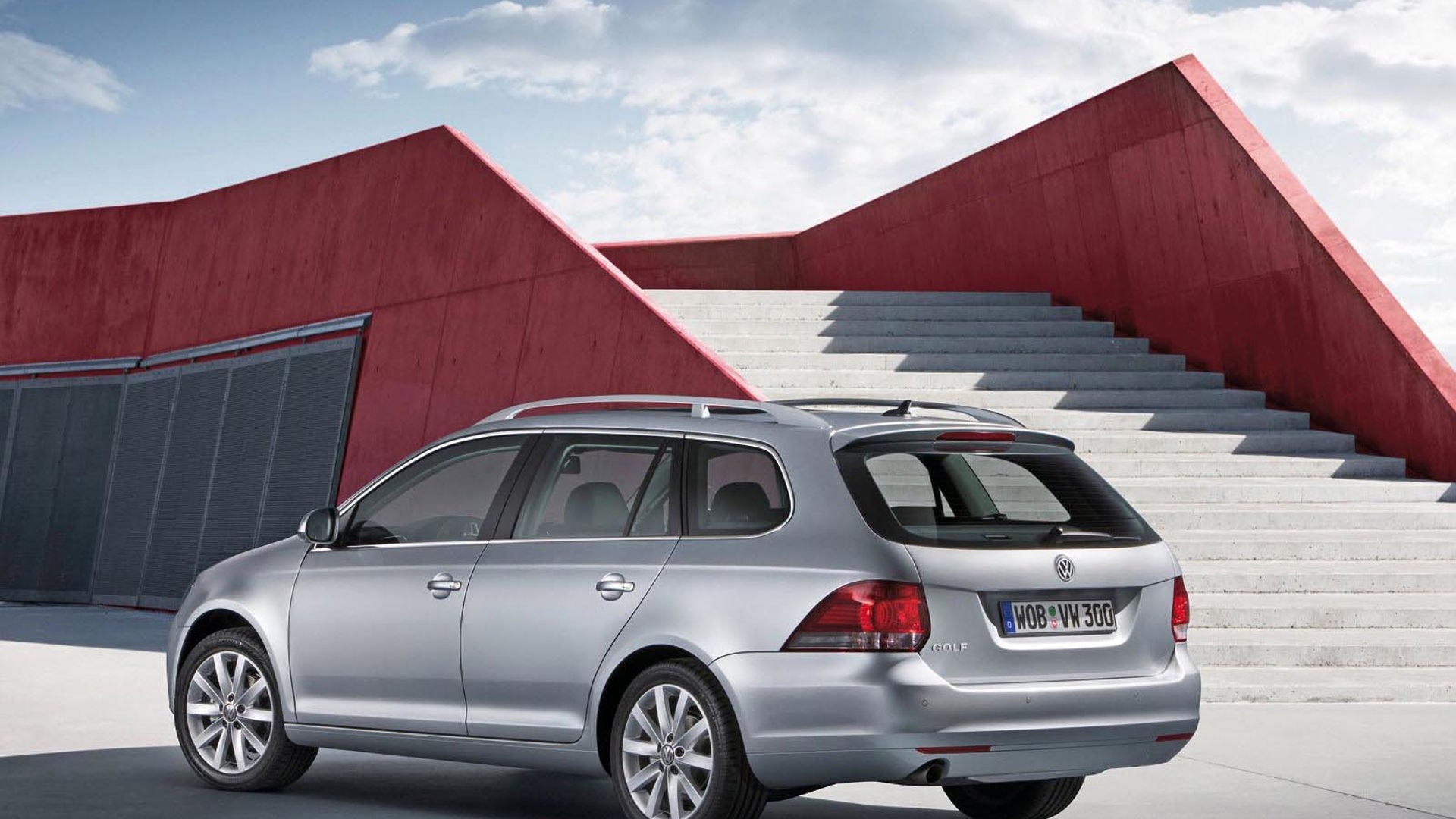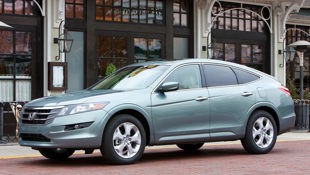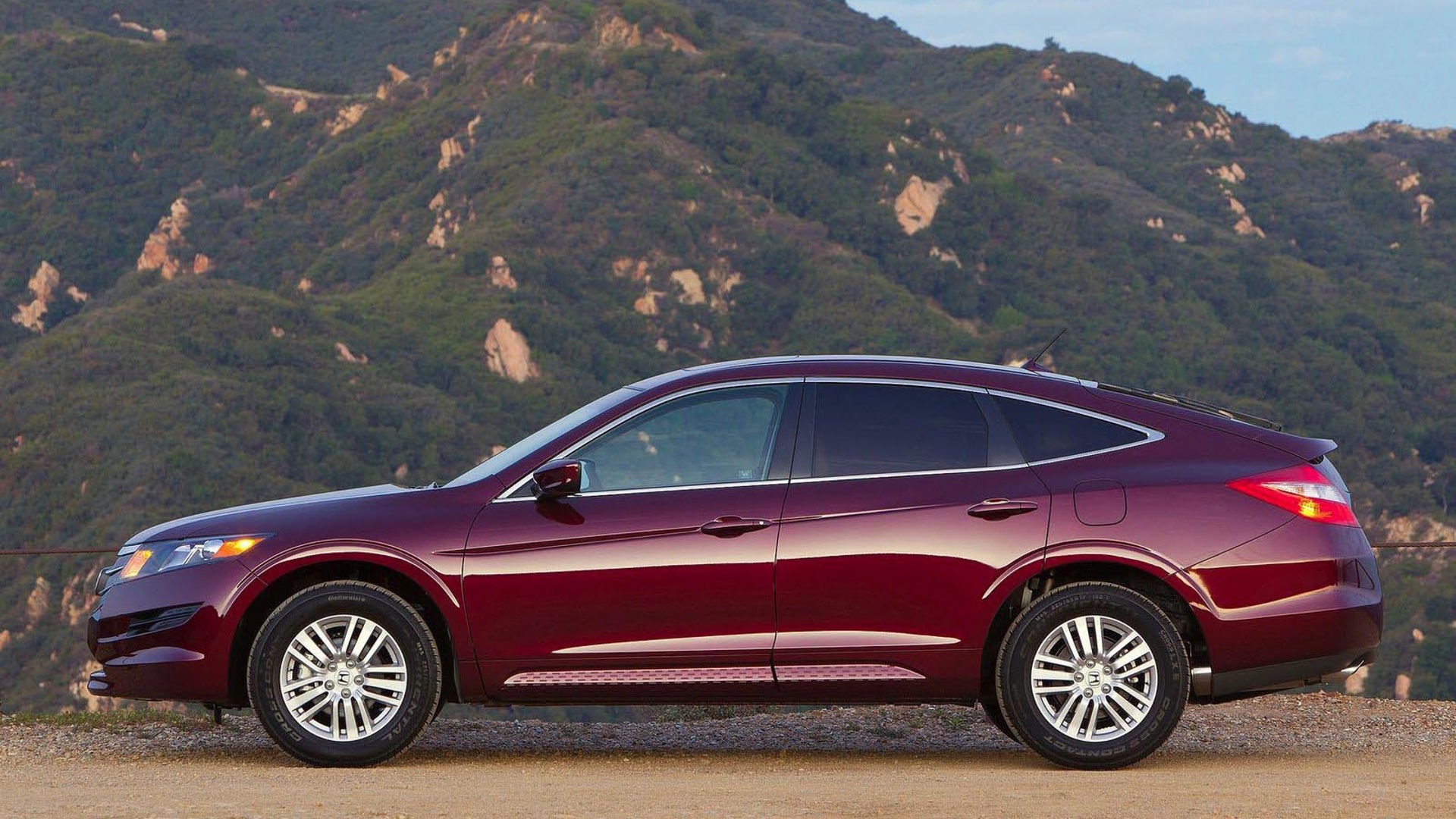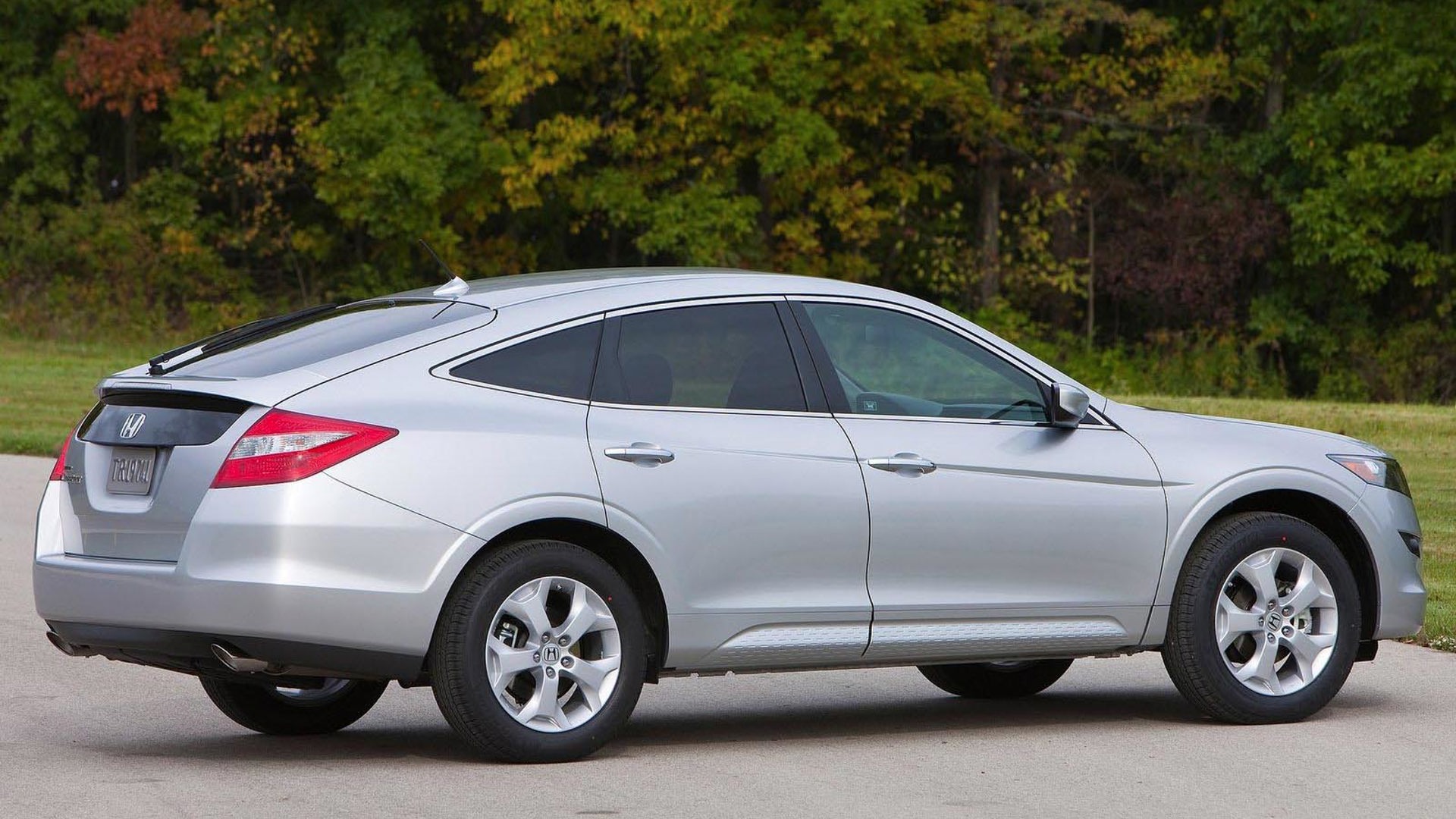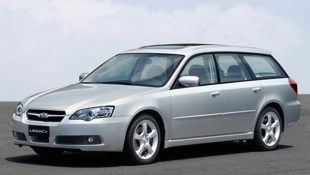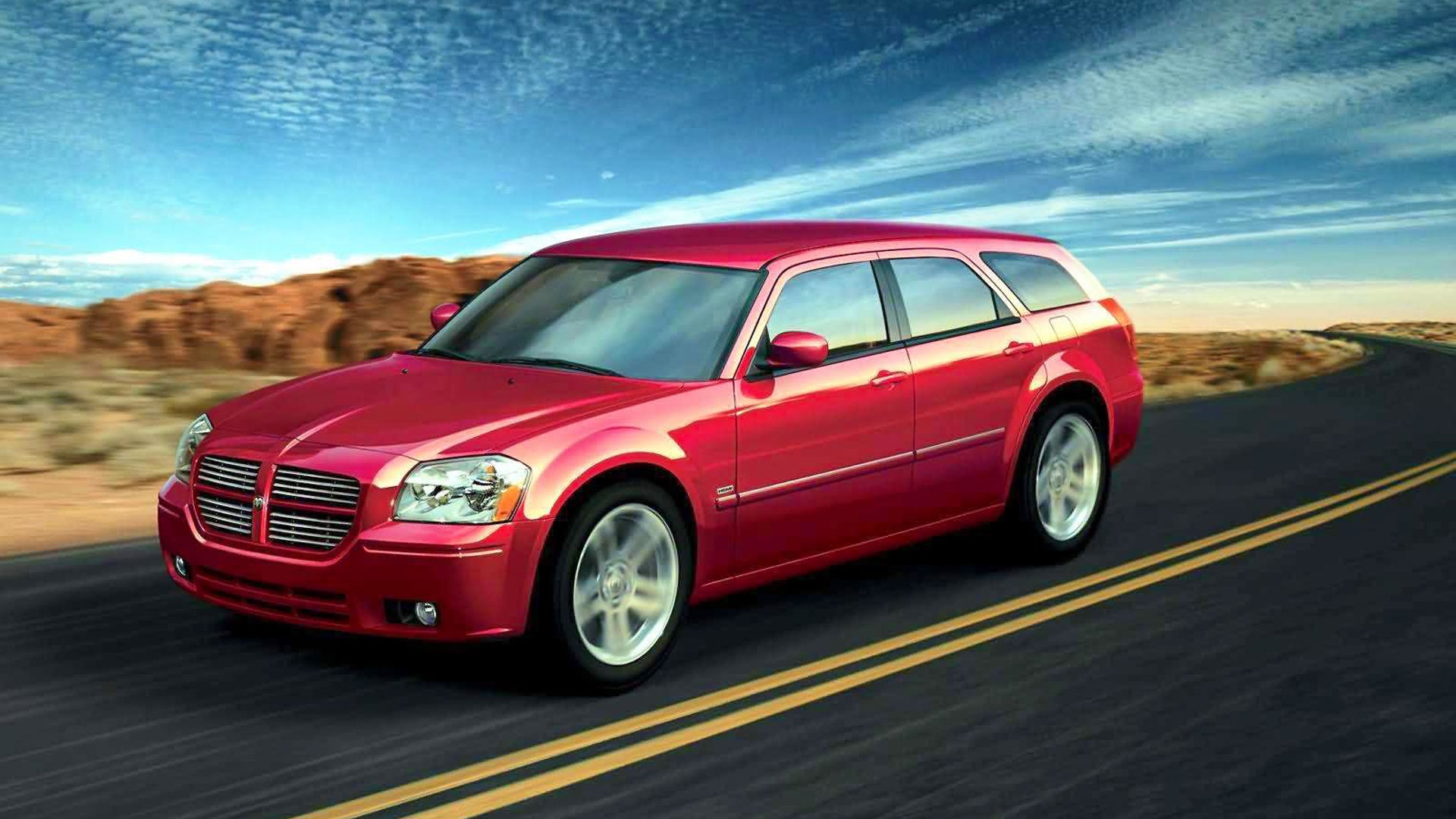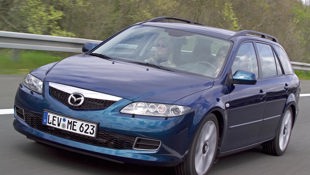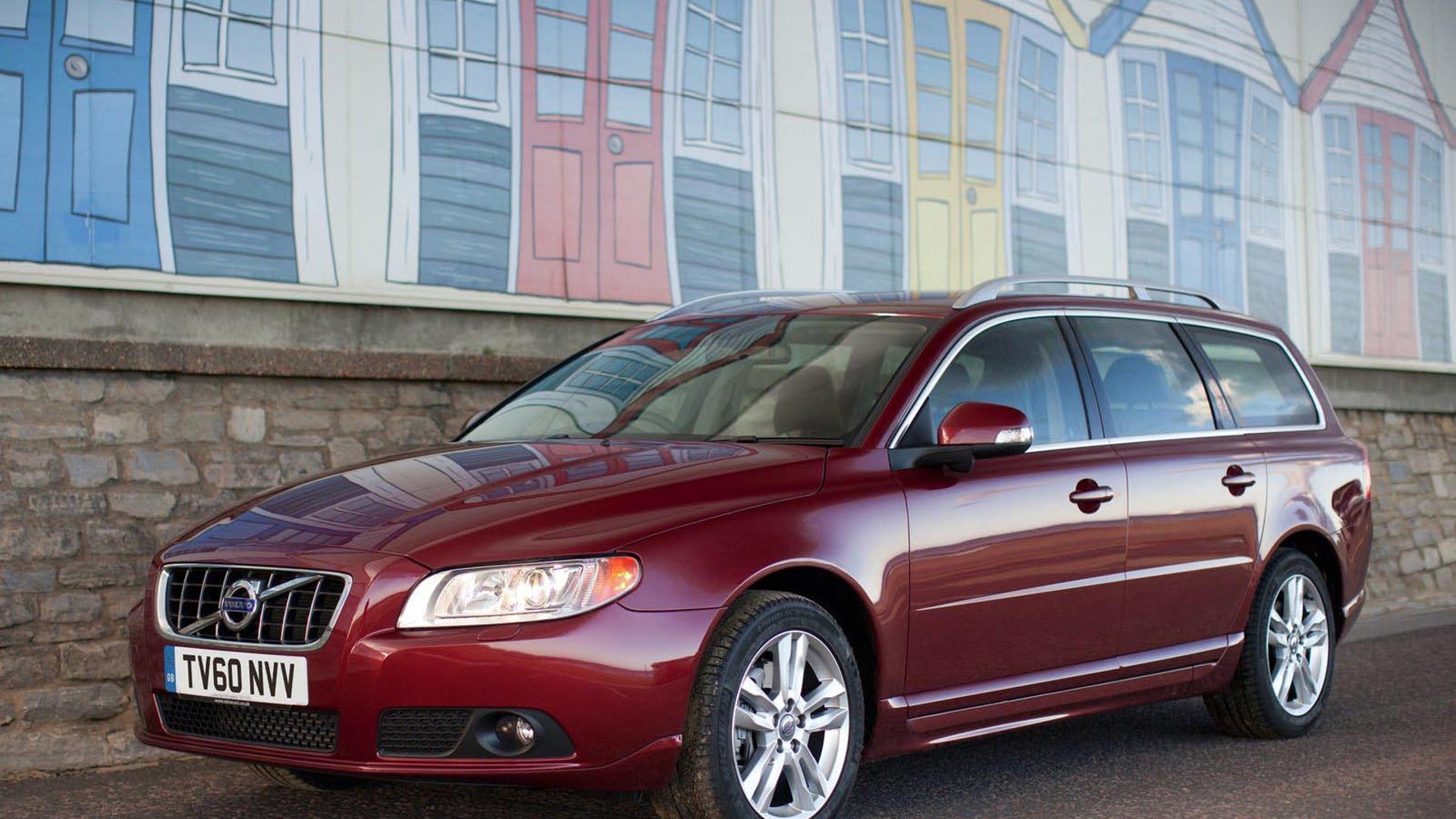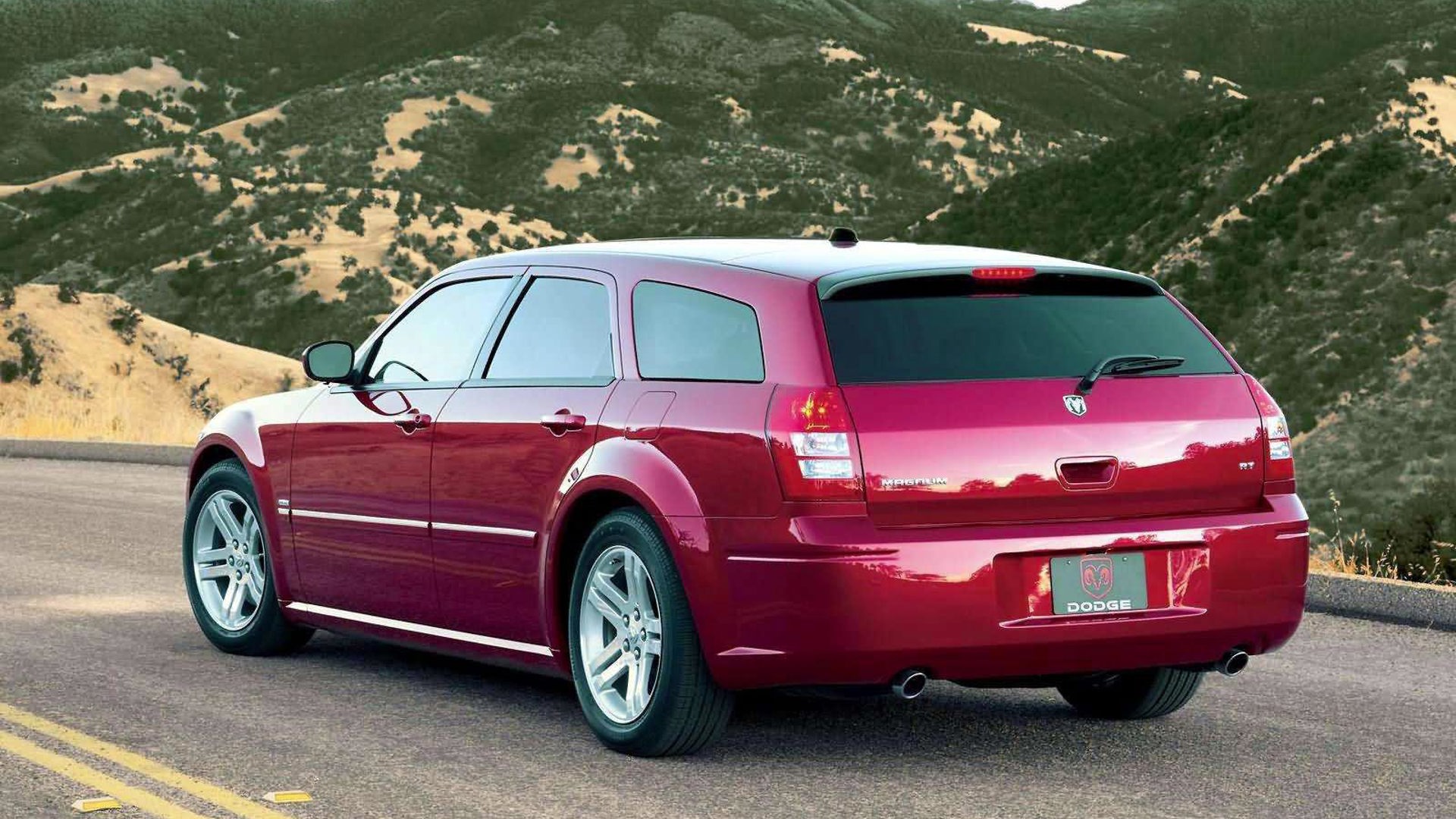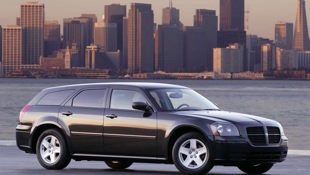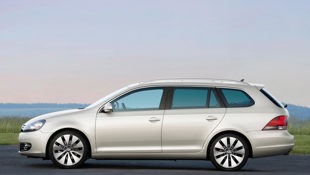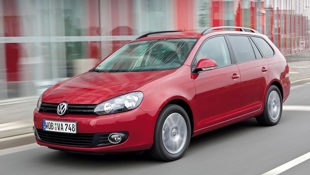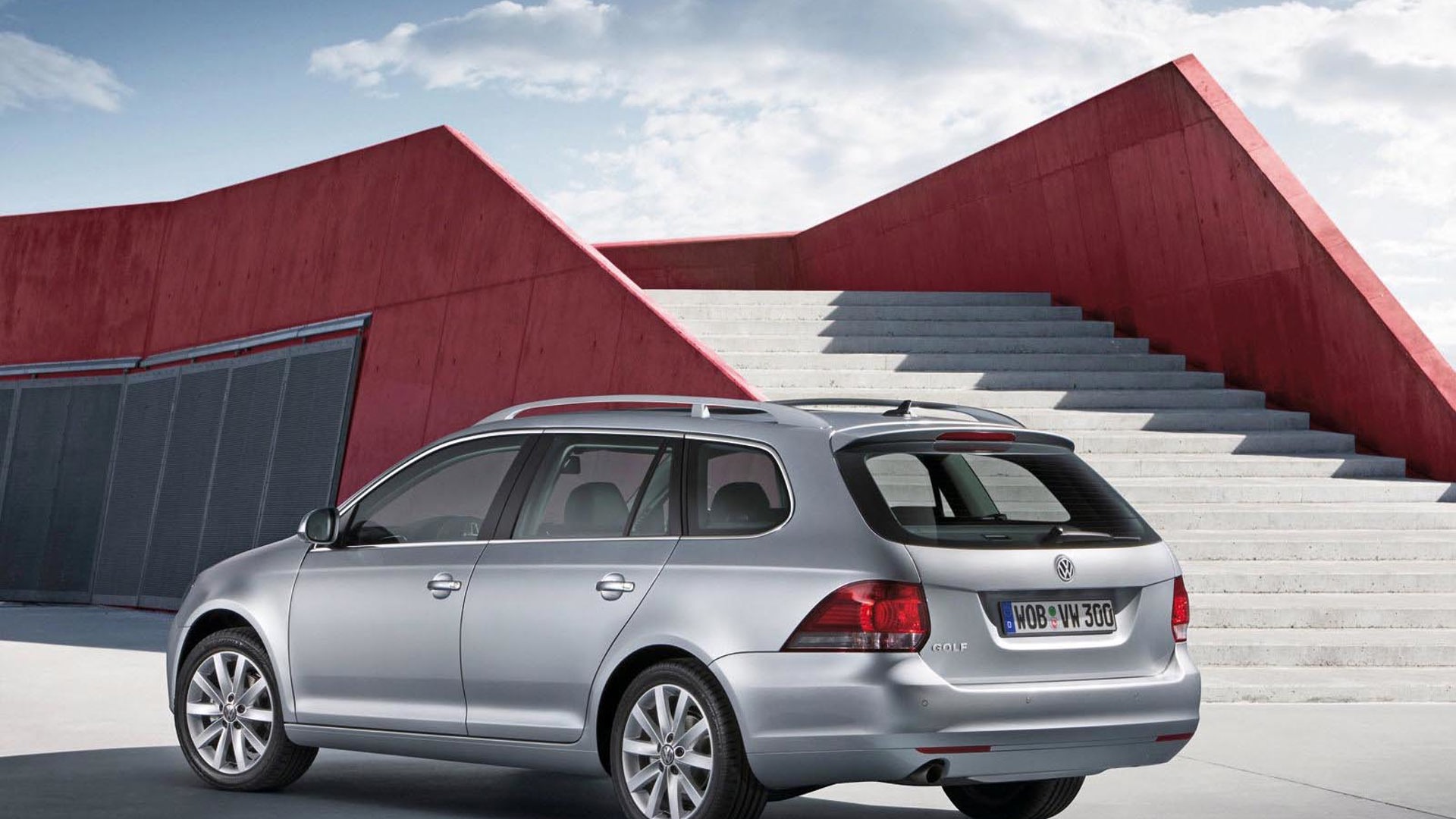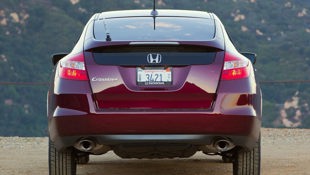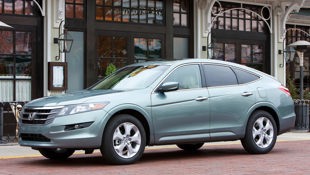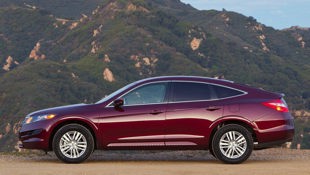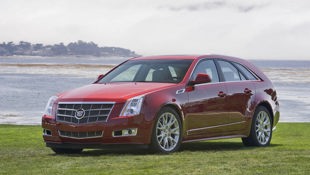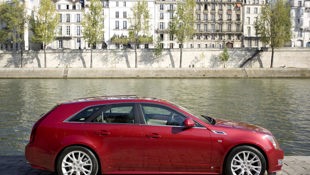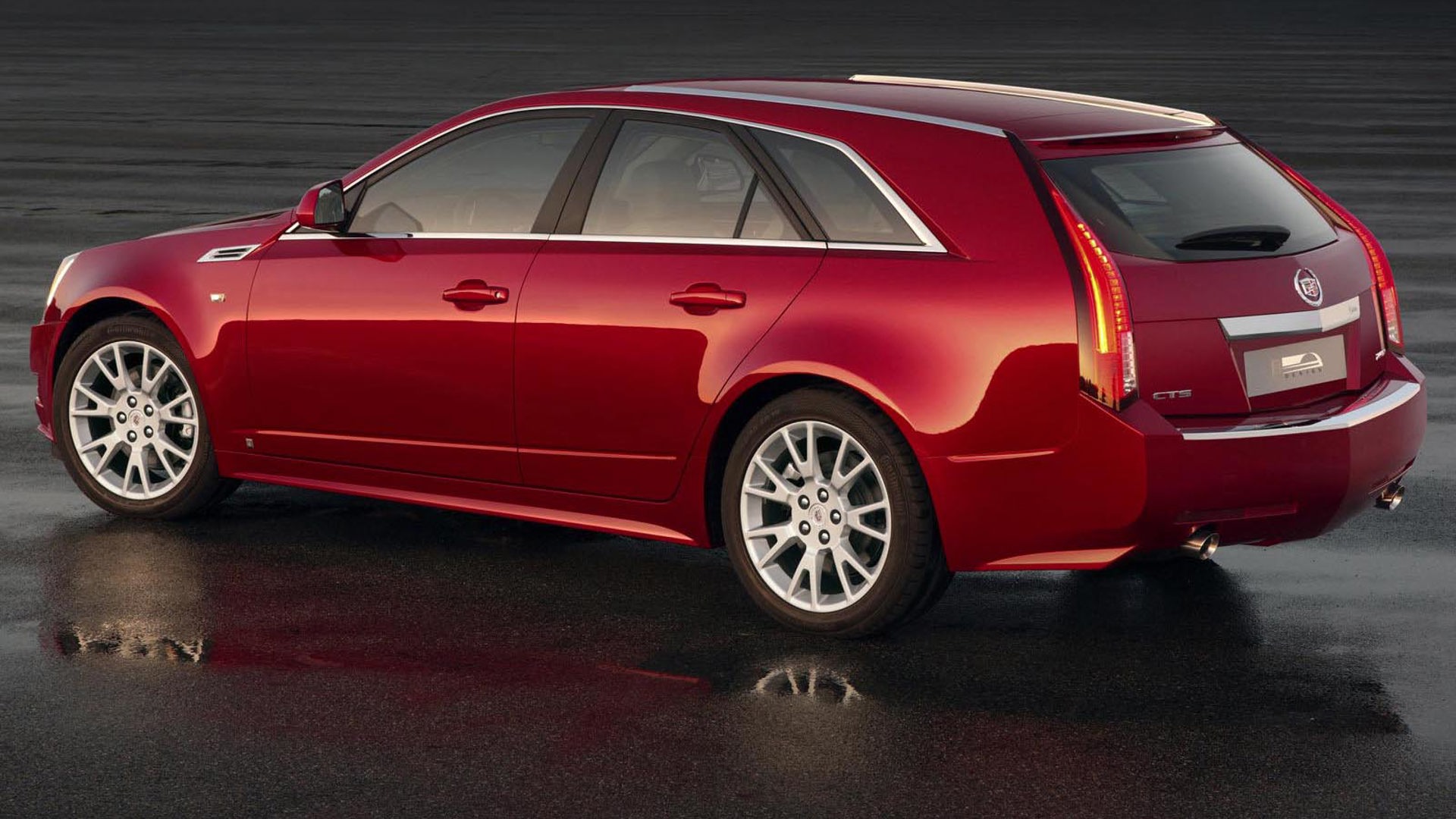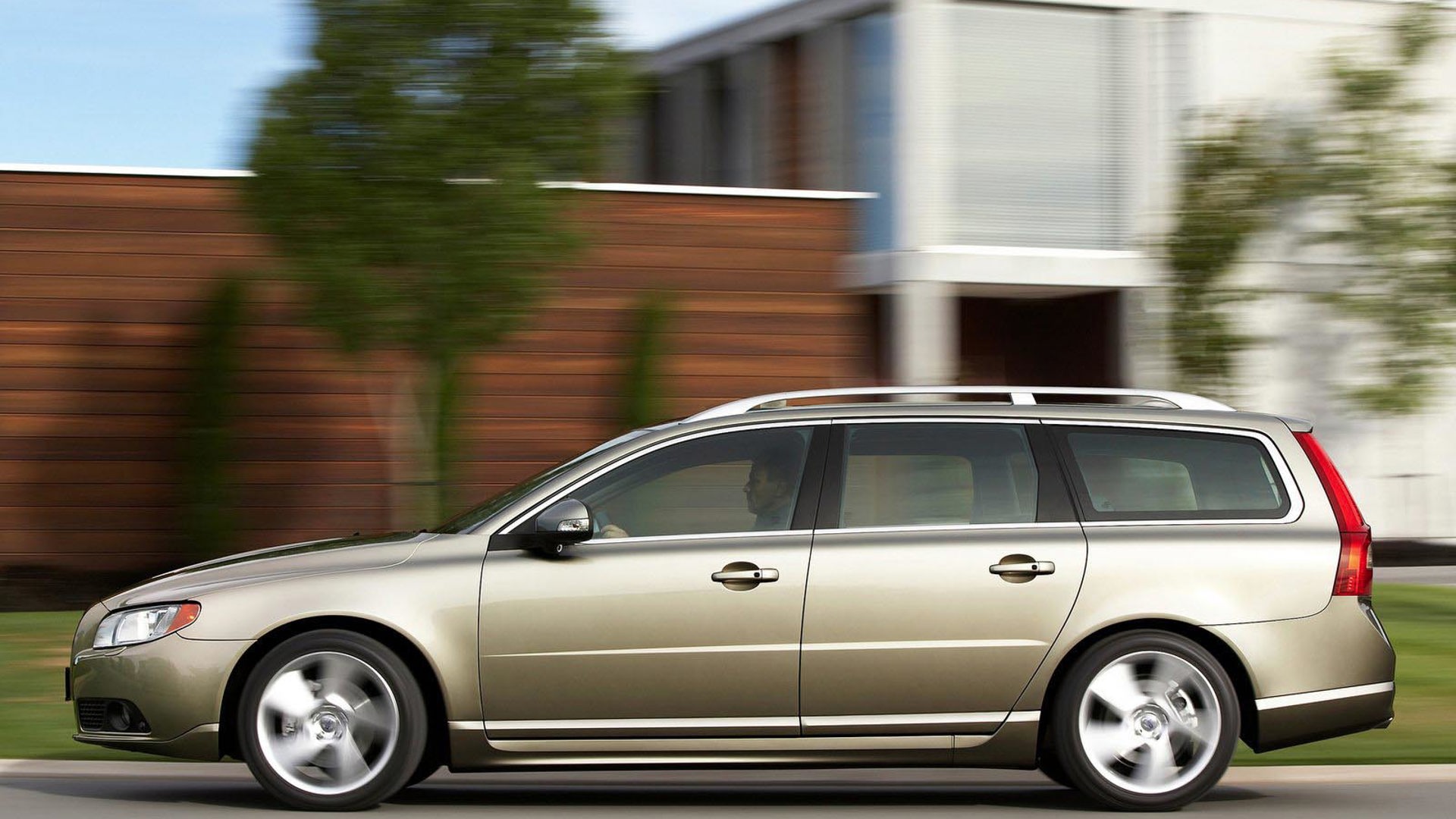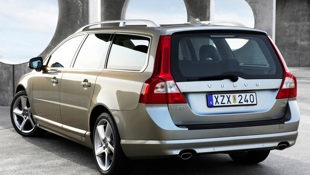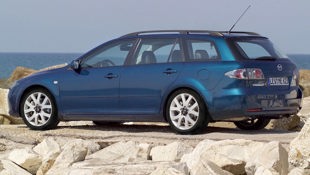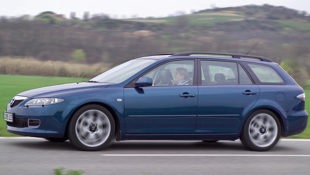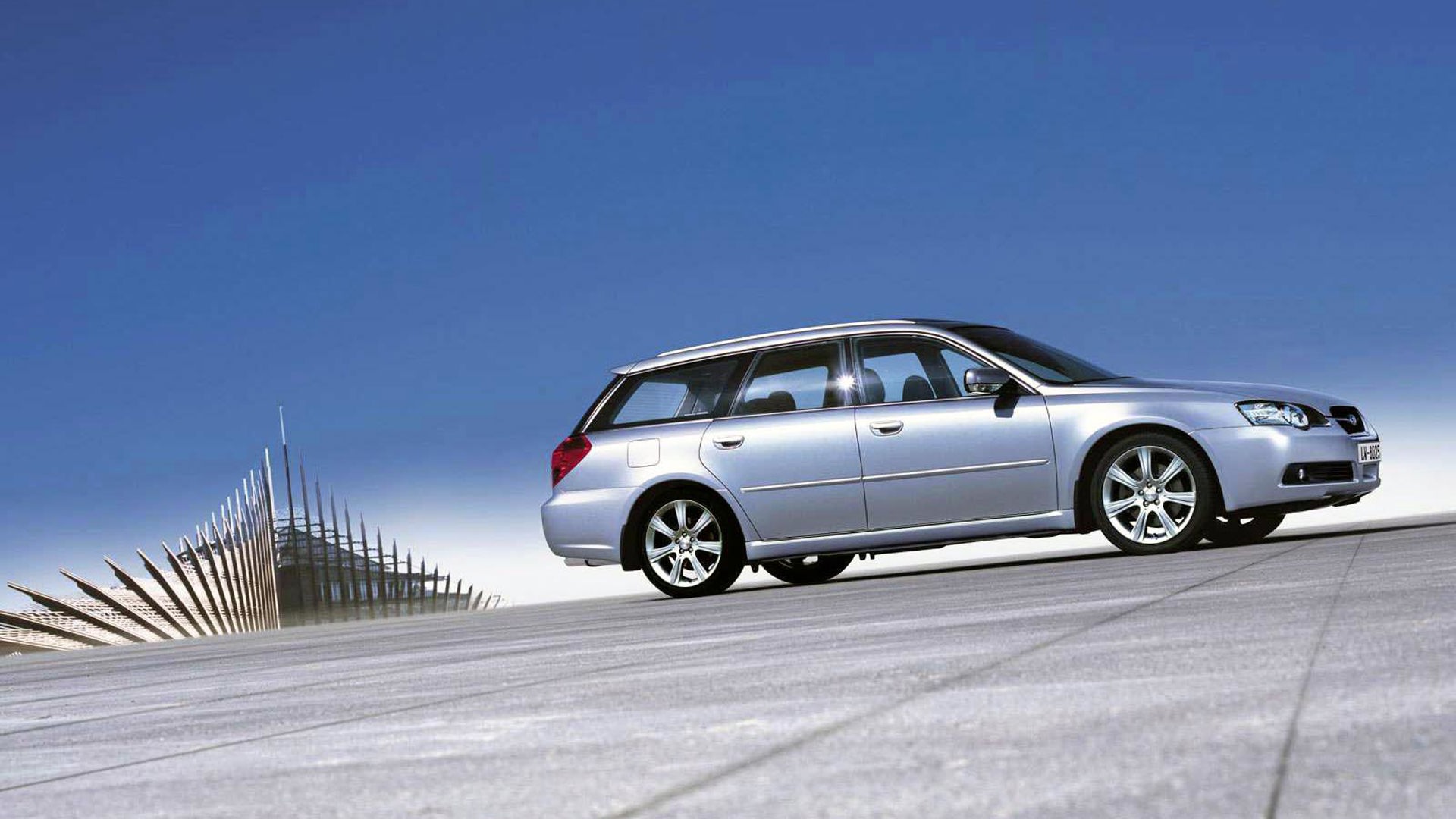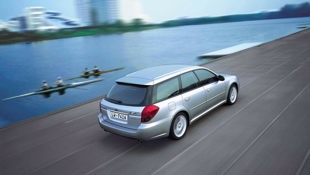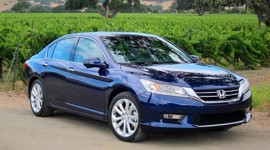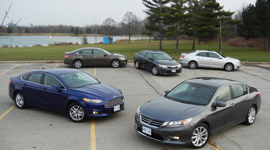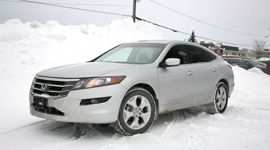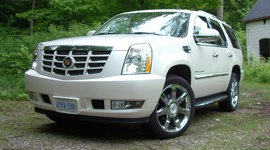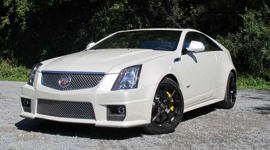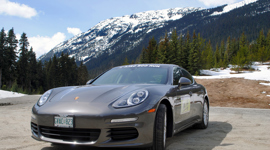Few things on four wheels are as wholesome and sensible as a station wagon. Driving one conveys your fertility, your family-orientedness, and your individuality to other motorists. It tells the world that you won’t fall in line and buy a crossover SUV like the child-rearing masses, and it makes you more interesting at parties, too.
Owning a crossover leaves you with a hefty fuel bill, a machine that blends in, and handling on par with a bungalow full of cottage cheese. Get yourself a station wagon, and a roof box for added cargo space, and you’re all set for family-ready stuff, without the bloat.
Of course, the once-glorious station wagon has become virtually extinct because of those pesky crossovers, though a few examples still exist in the new car market, and a few more exist in the used car scene, too.
If you’re after a car-like ride, car-like maneuverability and car-like fuel bills as well as a bit of extra space without moving into some sort of sports ute, a used wagon might be for you. Here’s a look at some of the used market’s most popular, across a spread of model years and price ranges, as well as some tips to help you shop smart for the one you like.
Model: 2005 to 2008 Dodge Magnum
Why: Because there’s plenty of selection, prices are very reasonable, and this striking looker from Dodge could be had with anything from a sensible V6 to a fire-breathing SRT V8 engine under its hood. All models were automatic; rear-wheel drive was standard, with AWD offered as an option with the V6 or smaller HEMI V8 engine. Look for 250 horses from the 3.5L V6, which most owners say is all you need. The 5.7L HEMI V8 punched output to 340 horsepower, and the SRT8 made it 425.
Feature content included navigation, a sunroof, leather seating, a rear-seat DVD player, automatic climate control and more. A nicely loaded Magnum in SXT or R/T trim delivers a nice driving experience for those after something slightly upscale and family-friendly.
Comfort and handling are often praised, and most drivers find the Magnum’s ride balanced nicely between the two – but some backsides may find the suspension too stiff for long drives. Many owners comment that the Magnum’s interior style isn’t its strongest attribute, and others note limited rearward visibility and a cooped-up feeling to the cabin.
Used Buying Notes: Though rare, some used Magnum models will offer a 2.7L V6 engine, which should be avoided on account of numerous, well-documented owner complaints regarding engine failure. The 3.5L unit sees far fewer complaints online, as do both of the HEMI V8 units.
There seems to be nothing major in terms of common transmission or AWD troubles in the Magnum’s life as a used car, although a mechanic should check all driveline components for leaks and signs of worn driveshaft carrier bushings, just to be safe. Note that transmissions were known to leak from a pressure switch mounted through their housing, though this problem should be fairly obvious during a pre-purchase inspection. Further, note that an unwelcome vibration appearing at various speeds could be the result of a driveshaft that’s out of balance.
Be sure to check for proper operation of all interior accessories on a test drive, paying special attention to the functioning of the windows and sunroof. Inspect the condition of seating and upholstery, remembering that the condition of a vehicle’s interior can be a good indication of how well it was maintained overall.
A mechanic can inspect the underside of the car in a few minutes if you’re unsure. Have them check the condition of the suspension, tires and brakes too. If attention is required to any of the above, be sure to call it into pricing negotiations.
You’ll want to contact a Dodge dealership to make sure all recall-related work has been performed. Recalls dealt with possible transmission issues, leaky brake lines, seatbelts, and an improperly-secured battery.
Model: 2010 to 2013 Volkswagen Golf Wagon
Why: Because it offers European-tuned driving manners, room for five, nimble handling, great maneuverability, easy-to-park sizing and extra space for your stuff. A panoramic sunroof, heated leather seats, automatic climate control, premium audio functionality and even heated washer fluid nozzles are all available in the used Golf Wagon. This one delivers some 1,900 litres of cargo space for SUV-like gear-hauling capability. Toss on a roof rack or cargo box, and it’s a highly fuel-efficient alternative to a used sports ute.
Gas models got a 2.5L five-cylinder engine with 170 horsepower. The TDI engine was a 2L turbodiesel unit with 140. Look for manual, automatic or DSG gearboxes depending on the model selected.
Owners rate comfort, utility, ride quality highly, noting an overall upscale and sporty driving experience, with many saying that they love their Golf’s cabin, which is attractively styled, highly functional and nicely trimmed. Typical complaints include high up-front pricing, wind noise at speed, and a mediocre standard stereo system. On models with larger wheels, expect a rougher ride.
Used Buying Notes: Ensure all electronic features and all motorized feature, work as expected – including all windows, the sunroof, power seats, power locks and climate control. Confirm proper heated-seat operation if equipped, and be sure all instrumentation and interior panel illumination is working properly.
Be sure no Check Engine or Check Transmission lights are illuminated, as they could be the result of one or more different problems ranging from a bad sensor to detection of engine knock.
Test the stereo system on both radio and CD modes, and be sure the air conditioner blows cold shortly after it’s turned on. Sub-par air conditioning performance could be the result of a dirty or clogged condenser assembly, or a refrigerant leak. A leaky hose is another possible culprit.
Engine problems seem fairly infrequent, with the majority of those reported online being sensor-related and relatively easy to diagnose and fix. Regardless, finding a model with full service records to prove its maintenance is up to date is a good idea. Earlier issues with timing gear and sensors on the 2.5L powerplant seem to have all been addressed for this generation.
On a TDI-powered model, ensure performance is smooth and seamless, and that on-time oil changes have been carried out throughout the vehicle’s life to date. Note that white, oily-smelling smoke shortly after startup of a cold engine could be a sign of a worn-out turbocharger. Further, ask a mechanic to check the fuel lines for possible signs of leaking under the hood. A puddle of diesel underneath the vehicle, or on top of the engine (under the removable plastic cover) is a definite trouble sign, too.
Be aware that a small number of TDI-powered models may suffer from a bad High Pressure Fuel Pump (HPFP), which may also be covered by a recall. Finally, note that problems with the available DSG transmission are typically sensor-related and not mechanical in nature – though shoppers who can drive a manual are advised to stick to their guns.
Model: 2010 to 2014 Honda Crosstour
Why: Nobody knows what the Crosstour really is, but we figure, for the purposes of this article, that the Honda Crosstour (formerly Honda Accord Crosstour) is pretty much a station wagon. Compared to the Accord sedan, it offers expanded cargo capacity, unique styling, the convenience of a hatchback body and even an available All Wheel Drive (AWD) system.
Look for Honda’s popular 3.5L, all-aluminum VTEC V6 engine under the hood, good for 271 horsepower in this application. All models were automatic.
Drivers note upscale cabin appointments, great forward visibility, a comfortable and responsive chassis, a punchy engine and abundant interior storage facilities. A sunroof, heated leather seats, navigation, satellite radio, Bluetooth and automatic climate control may be found aboard.
All in all, the Crosstour is designed to fulfill multiple roles with a stylish exterior and premium interior appointments from the passenger cabin to the cargo area. It also delivers elevated levels of utility with accommodating under-floor storage facilities, and a reversible cargo area floor panel for dirty objects.
Used Buying Notes: On a test drive, be on the lookout for signs of premature tire and brake wear. Note that a squealing sound at low speeds, or under light to moderate braking, is likely a sign that a brake job is in the model’s immediate future.
Note that the V6 engine uses a timing belt that requires periodic, pre-failure replacement to prevent engine damage. Determine where the timing belt sits in its service life if you’re considering a V6-powered model, and budget for a timing belt change if it’s overdue.
Other issues may include remote keyfobs that fail to lock the car, weak heat from the climate control system (which could be the result of a bad thermostat) and a busted air conditioning condenser that’s suffered an impact with a rock or other piece of debris. Be double sure to confirm the A/C works in the model you’re considering.
Be sure to pop the hood, have the seller turn the steering fully from side to side, and listen for any unwelcome sounds from the power steering pump. This unit should be fairly quiet, even when it’s working. If it sounds like an overloaded shop-class wood planer, it’s likely about to keel over and die.
While the Crosstour is on your mechanic’s hoist for a pre-purchase inspection, ask for a check for signs of leaks, especially around the radiator, transmission and rear differential. Any of these should be relatively easy to spot.
Model: 2010 to 2013 Cadillac CTS Sport Wagon
Why: Because it’s classy, handsome, high-tech, offers sporty wagon goodness, and can be had with 300-plus horsepower and AWD. Six-speed transmissions in the driver’s choice of manual or automatic were available, depending on the model in question.
All expected high-end options were available, including climate-controlled seats, navigation, Bluetooth, rain-sensing wipers, remote start, fantastic adaptive xenon lights and premium BOSE audio. Note that CTS models were named CTS for two-wheel drive, or CTS4 for AWD. Then, the engine’s displacement (namely 3 or 3.6) followed.
Notably, the CTS Sport Wagon offered a power tailgate, enhanced cargo capacity, and some 720 litres of space behind the rear seats. That figure more than doubles when the rear seats are folded flat, while a long, flat roof and load floor team up to maximize capacity. Classy looks, a rich and high-tech cabin layout, AWD confidence and overall ride, handling and performance are typically rated highly by CTS owners. Ditto noise levels, and the lengthy list of technology options.
Used Buying Notes: One of the most common issues reported in the second-generation CTS is oil consumption, which is well documented. Many owners report that dealers say heavy oil consumption is normal, though some owners have had luck getting their dealer to monitor the oil consumption for warranty claims. Note that not all CTS models were affected by heavy oil consumption from the 3.6L engine, though shoppers are advised to start a test-drive by checking the condition and level of the oil for signs of trouble. Be sure the seller was fond of frequent and timely oil changes.
Issues with various sensors, timing chains, and timing chain gear failure seem to have affected mostly early units in this generation of the CTS, and it’s unclear if they were remedied by time the CTS Sport Wagon rolled out. Note that a Check Engine light may illuminate if there’s a timing-related issue. Talk to a service advisor at a Cadillac dealer if you have any concerns.
Avoid a model that exhibits any signs of rough shifting or slippage from the transmission, and be sure that all interior components that are electronic in nature function properly. Pay special attention to the power seats, navigation and stereo, as these are among the most commonly reported issues in owner forums.
Shop carefully for a used CTS Sport Wagon, and strive to protect yourself against various well-documented issues by opting for a certified pre-owned model with plenty of available warranty remaining.
Model: 2008 to 2010 Volvo V70
Why: A facelifted and updated V70 hit the road for 2008, packing numerous updates to equipment, looks and functionality. Volvo gave this wagon the axe after 2010, thanks to sissy-pants crossover-oriented shoppers helping to seal the fate of wagons in North America. This generation of Volvo’s majestic station wagon packed a 3.2L straight-six engine with 235 horsepower, mated to a six-speed automatic transmission driving the front wheels. Feature content included premium audio, active steerable headlights, push-button ignition, a full leather interior, navigation and plenty more.
Folding rear seats and a generous cargo hold help enhance versatility and flexibility on the go, and owners tended to rave about headroom, easy entry and exit, and an overall solid and dense feeling of safety and security. Some owners wished for a smoother and quieter ride, less noise penetration from the trunk area, and better fuel mileage.
Used Buying Notes: Start with a check of the radio and rear defroster, which some owners have said can operate sporadically, or fail outright. Check the instrument cluster for any signs of overheating on your test drive, or any Check Engine lights, which may relate to an issue with the engine’s electric fan system not kicking in when required. Note that transmission issues common on the previous-generation V70 seem to have been dealt with here, though shoppers are still advised to drive a potential used candidate with an eye for transmission trouble, including slipping, harsh shifts, or unwanted noises or vibrations as they accelerate, lightly and moderately, at a variety of speeds.
Ensure all door locks and windows operate as expected from both the interior switches and remote. The tailgate should stay open on its own with no assistance. If that’s not the case, the hydraulic lifts could be in need of replacement. Finally, note that a lumpy or sporadic idle, or hesitation during acceleration, could be caused by a faulty engine computer component.
Model: 2004 to 2008 Mazda6 Wagon
Why: Because the original Mazda6 was sporty, fun to drive, looked athletic, and offered a station wagon variant that was actually fun to drive. These will be highly affordable in the used market today, if you can find one, and a healthy used model should prove a highly enjoyable machine to drive. Look for a 2.3L four-cylinder with 160 horsepower, or a 3L V6 with 220. Transmission choices included a five-speed manual or an automatic with between four and six gears depending on the year in question.
Heated, motorized leather seats were available, as were side and curtain airbags. Fog lamps, heated mirrors, a CD changer and big alloy wheels could be fitted, too.
Owner likes and dislikes offer few surprises. Most came for the styling and stayed for the exceptional handling, attractive exterior and sporty, upbeat cabin. The 6 wasn’t as big as some of its competitors, but many an owner and publication have proudly heralded it as the true sports car of its segment.
Used Buying Notes: Given the sporty nature of the 6 and its large wheels, replacement rubber isn’t going to be incredibly cheap, so start your visit with a used Mazda6 wagon looking at the condition of the tires, ensuring the seller isn’t trying to get you to pick up the bill for new rubber.
Pay close attention to the operation of the automatic transmission if your used 6 candidate is equipped with one. Any shuddering, hard shifts, slipping or questionable sensations need to be identified and addressed. There have been reports of automatic transmission issues in the Mazda6 that may be evidenced by any of the above. Be especially careful if the unit you’re after has the six-speed automatic (2005 and later). Using the wrong sort of fluid during a fluid and filter change can actually ruin the transmission. Ask if, and where, the fluid was most recently changed – if at all. Only service this component at the dealer.
Finally, note any clunking or popping noises coming from the front end. This could indicate a suspension component that’s in need of replacement, which is more likely on an older, higher-mileage model. On a pre-purchase inspection at a Mazda dealer, ask the service counter to see if the unit you’re considering has undergone recalls which dealt with seatbelts, a brake fluid–level sensor and a fuel sending unit seal.
Finally, check out the condition of the paint. Investigate carefully for excessive rust on the lower edge of the liftgate, the lower and inner portions of the doors, and the area around and inside of the wheel well edge.
Model: 2005 to 2009 Subaru Legacy Wagon
Why: Because it packed all-wheel drive, came with a manual transmission if you liked, and offered up all of the goodness of a Japanese station wagon. These will be coming down in price nicely in the used market, and pack plenty of power if you opt for the lusted-after Legacy GT Wagon, with turbocharged engine, 250 horses, and manual transmission. Legacy owners typically rate fuel mileage from the non-turbo engine well. The handling and dynamics, responsiveness and interior build quality also received top marks. All-weather confidence thanks to the standard AWD system is also typically raved about, too. Common complaints deal with overall interior volume, a small-ish rear seat, and ho-hum performance from the standard engine. Look for an oversized sunroof, heated leather, steering-wheel mounted controls and remote access on the features list.
Used Buying Notes: As this is an older used model, be sure to have a very good look around for signs of excessive rust, including around the sunroof, taillamps, and the lower edge of the rear window where it meets the sheetmetal on the liftgate. Rust will also tend to form on the lower and inner lip of the liftgate.
Have a mechanic look under the vehicle for signs of excessive rust, the condition of the brake lines, fuel lines and fuel tank. Ask the mechanic to inspect for signs of leaks from the differentials and transmission, too. A squealing or scraping noise from the front of the engine while idling could be caused by a belt-tensioner pulley that’s starting to fail – though this issue is fairly common, easily identified and easily fixed.
If you’re checking out the turbocharged Legacy GT, be extra sure the model has been treated to regular, high-quality oil changes, which are vital to long-term turbocharger health. Confirm that the model has never had the factory computer system re-tuned to run higher-than-stock boost, which can adversely affect the lifespan of all affected components. Insist on driving the car when it’s cold, and confirm that the seller hasn’t pre-warmed the car ahead of your arrival to conceal some smoking issue – which could indicate a bad turbocharger.
Finally, and this is important, be absolutely sure to have the suspension and chassis fully checked over by a mechanic on an older, higher mileage unit. Some owners have reported premature wear of bushings, ball-joints, CV joints and shock absorbers.
